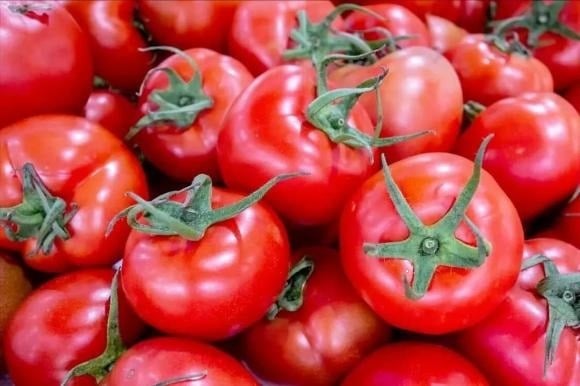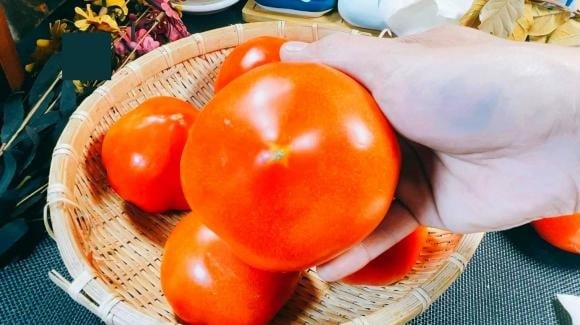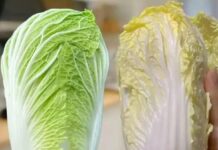Although tomatoes are a familiar food, not everyone knows how to choose the best, juiciest ones. Many people are drawn to their bright red color and make a hasty purchase, only to discover that their tomatoes are hard, dry, bland, and lacking in flavor once they get home.
According to an experienced tomato farmer, there are five crucial criteria that buyers should consider to select the freshest and most delicious tomatoes:
Criterion 1: Opt for round-shaped tomatoes with flat bottoms, avoiding pointed ones
Not all tomatoes are created equal. If you examine the base of the fruit, you’ll notice two distinct shapes: some have flat, round bottoms, while others taper to a small point.
According to long-time tomato growers, the round-bottomed tomatoes are typically those that have ripened naturally, absorbing ample sunlight and nutrients. On the other hand, the pointed tomatoes are often the result of growth stimulants used to prevent premature fruit drop. These stimulants can cause uneven development and may even compromise safety and flavor.

Criterion 2: Choose heavy tomatoes, avoiding light ones
The best tomatoes are juicy and full of flavor. When holding a tomato, if it feels heavy for its size, it’s likely a fresh, juicy, and perfectly ripe fruit. In contrast, light tomatoes are often dehydrated, having been left on the shelf for too long or suffering from a lack of water during the growing process, resulting in a dry and unappetizing texture.
Criterion 3: Opt for natural red tomatoes, avoiding green or overly vibrant red ones
Delicious tomatoes typically boast a uniform bright red color, free from blotches or green patches. Naturally ripened tomatoes on the vine will have a gentle red hue, neither too shiny nor abnormally vivid. Conversely, green tomatoes, which are unripe, tend to be bland and hard. If you come across tomatoes with an unusually deep red color and an unnatural shine, they have likely been treated with ripening chemicals and should be avoided.
Criterion 4: Examine the stem – choose tomatoes with 6 leaves, avoiding those with only 5
A small but significant detail to consider is the number of leaves on the tomato’s stem. According to farmers, tomatoes with six small leaves around the stem tend to be more fully developed, having absorbed more sunlight and nutrients than those with only five leaves. This directly impacts the sweetness and juiciness of the fruit.

Criterion 5: Choose tomatoes with a slight give and bounce back, avoiding hard ones
Gently press your thumb into the tomato – if it yields slightly and bounces back, it’s a good indication that the tomato is perfectly ripe, sweet, and ready to eat. Conversely, a hard tomato, despite appearing red on the outside, is likely still unripe on the inside and may even be a chemically ripened one, which could pose health risks.

































